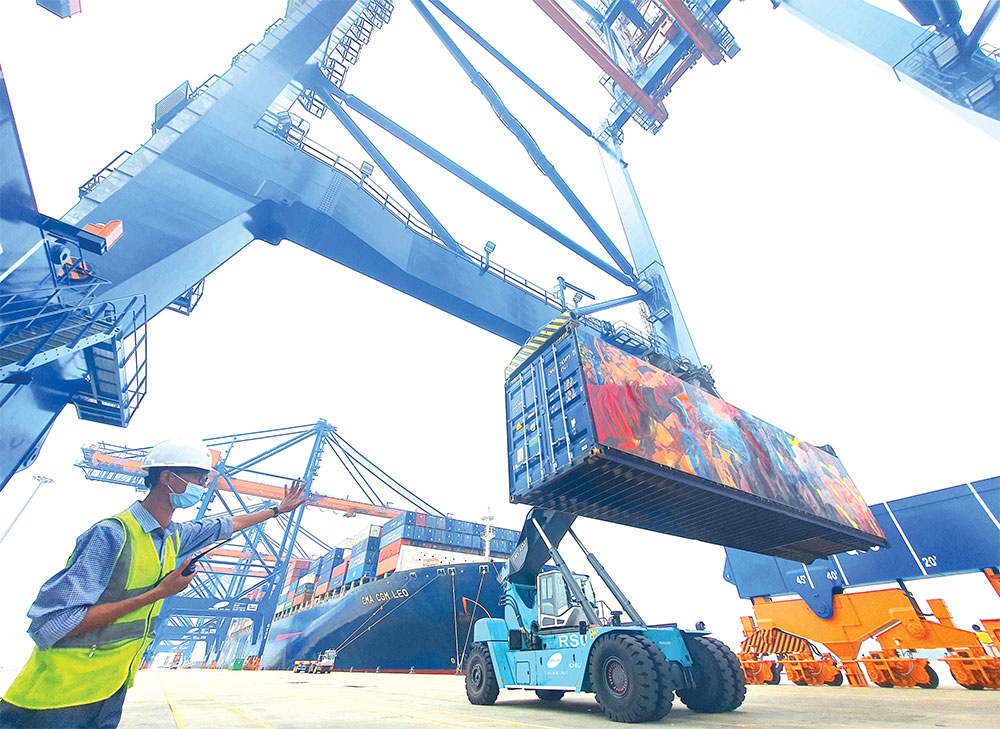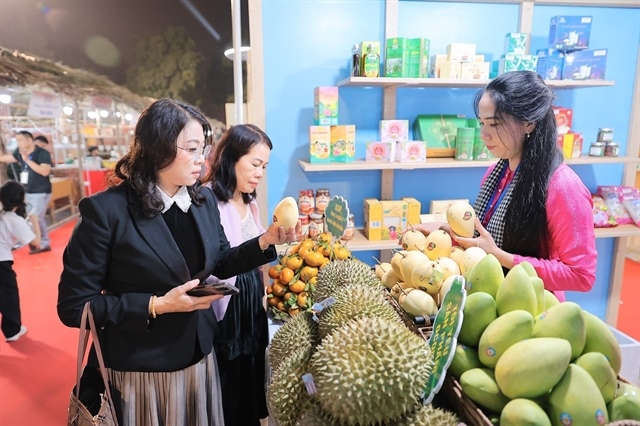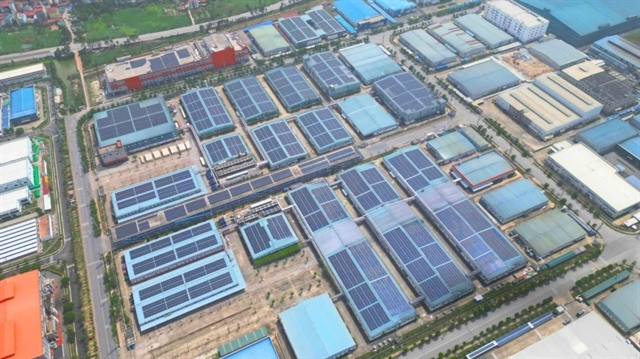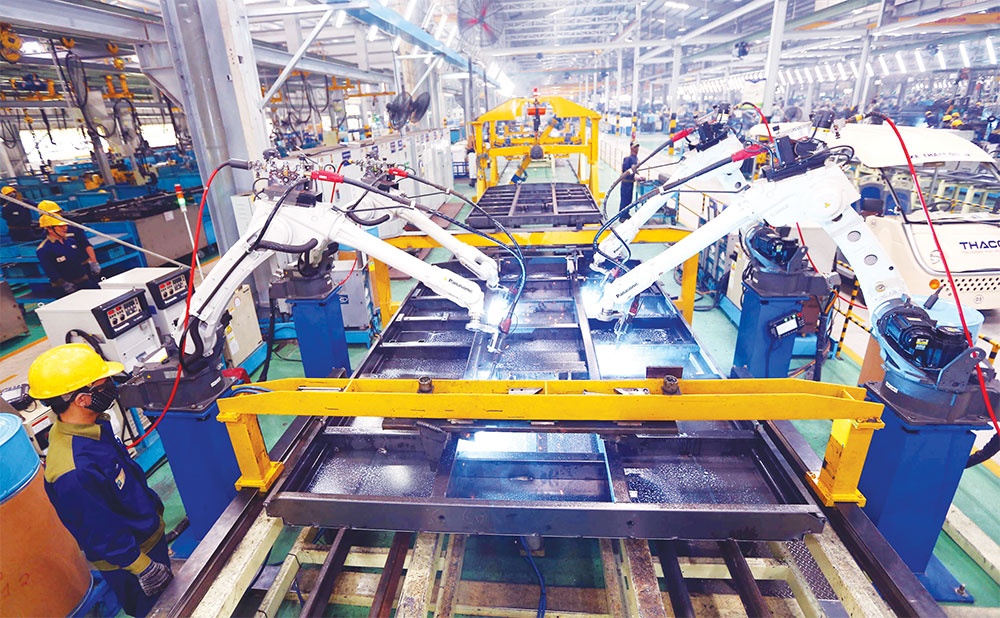Import-export expanding via surplus
Import-export expanding via surplus
A large 9-month trade surplus has reflected an expansion of both exports and imports, with involved products mostly being for industrial development.

According to the General Statistics Office (GSO), it is estimated that Vietnam raked in a trade surplus of $6.52 billion in the first nine months of this year.
Total export turnover is estimated to have hit $282.52 billion, up 17.3 per cent on-year, of which $262 billion is for industrial products – accounting for 92.7 per cent of Vietnam’s total export turnover.
Industrial items with big export rates include garments, textiles, and footwear (20.7 per cent); computers, electronics, and spare parts (15.9 per cent); mobile phones and spare parts (17.4 per cent); machinery and equipment (13.1 per cent); fossil coal (106.8 per cent), crude oil (40.2 per cent), fertiliser (170.4 per cent), and chemicals (44.2 per cent).
Samsung is estimated to create more than 90 per cent of Vietnam’s total export values of electronics and mobile phones. So far this year, the country’s total export of mobile phones and spare parts hit $45.4 billion, up 10.7 per cent as compared to the same period last year.
Total revenues of Samsung Thai Nguyen, Samsung Bac Ninh, Samsung Display Vietnam, and Samsung HCMC CE in Q2 were $17.9 billion, up 30 per cent on-year, as reported in financial statements from Samsung Electronics Group. In terms of profit, the factories fetched $1.31 billion in Q2, also up as compared to the corresponding period last year. The respective revenues and profit in Q2 were $7.9 billion and $770 million from Samsung Thai Nguyen; $4.7 billion and $400 million for Samsung Bac Ninh; $4.1 billion and $40 million for Samsung Display Vietnam; and $1.3 billion and $100 million for Samsung HCMC CE.
Samsung is expecting its export turnover to be $69 billion for the whole year.
Meanwhile, according to the GSO, in the first nine months of this year, Vietnam’s total import turnover sat at an estimated $276 billion, up 13 per cent on-year.
Of which, $260.4 billion was for importing items for industrial production – accounting for 94.3 per cent in the economy’s total import value. Such items with major import value increases included machinery and equipment (13.4 per cent), mobile phones and spare parts (6.1 per cent), electronics and spare parts (24.9 per cent), and crude oil (68.1 per cent).
The Ministry of Industry and Trade (MoIT) estimated that Vietnam’s total export and import turnover for the whole of 2022 may be about $368 billion and $367 billion – both up nearly 9.5 per cent over 2021. This is expected to create a $1 billion trade surplus.
All are thanks to consumers’ high spending, and tax reduction and removal under free trade agreements’ commitments.
By late last year, forecasting that the global market will see negative fluctuations in goods demand, the National Assembly set a target for Vietnam’s export-import turnover for 2022 to be $660.8 billion, including $329.9 billion for exports and $330.9 billion for imports. This means a $1 billion trade deficit.
This target is lower than what was reaped last year, in which the export-import turnover hit $668.5 billion, with a trade surplus of $4.08 billion.
The MoIT has also set a 2023 target of an on-year export turnover increase of 8 per cent, or $397.4 billion, with a trade surplus reached, and a total retail and consumption service revenue of as much as $268.6 billion, up 9 per cent on-year.
However, the MoIT also underlined major headwinds against Vietnam’s trade landscape.
“In the remaining months of this year, very high inflation in many nations has shrunk demands for consuming indispensable imported goods, then affecting Vietnam’s exports and economic recovery. Besides this, supply chain disruptions are expected to continue in the coming time, slowing down post-COVID recovery of economic, trade, and investment activities,” said an MoIT report. “Prices of indispensable goods and transportation costs remain at a high level, affecting the global economic recovery and creating difficulties to economic and trade activities, and also denting Vietnam’s export-import activities.
The National Assembly’s Economic Committee has also warned that authorised agencies need to take great caution about “a possible danger of new pandemic outbreak due to new existing variants which can undermine the domestic economy’s recovery and especially exports.”
The committee warned of risks in expanding exports as global economic growth is expected to reduce from 3.6 to 4.4 per cent. For example, in April, the International Monetary Fund cut the rate to 3.6 per cent both in 2022 and 2023, down by 0.8 and 0.2 percentage points as compared to the fund’s January forecast.
Meanwhile, the World Bank said that Vietnam’s manufacturing exports are expected to grow at a slower pace mirroring moderating growth in Vietnam’s main export markets including the US, China, and the EU.
Fitch Ratings has also cut its forecast for China’s 2022 GDP growth to 4.3 from 4.8 per cent.


























